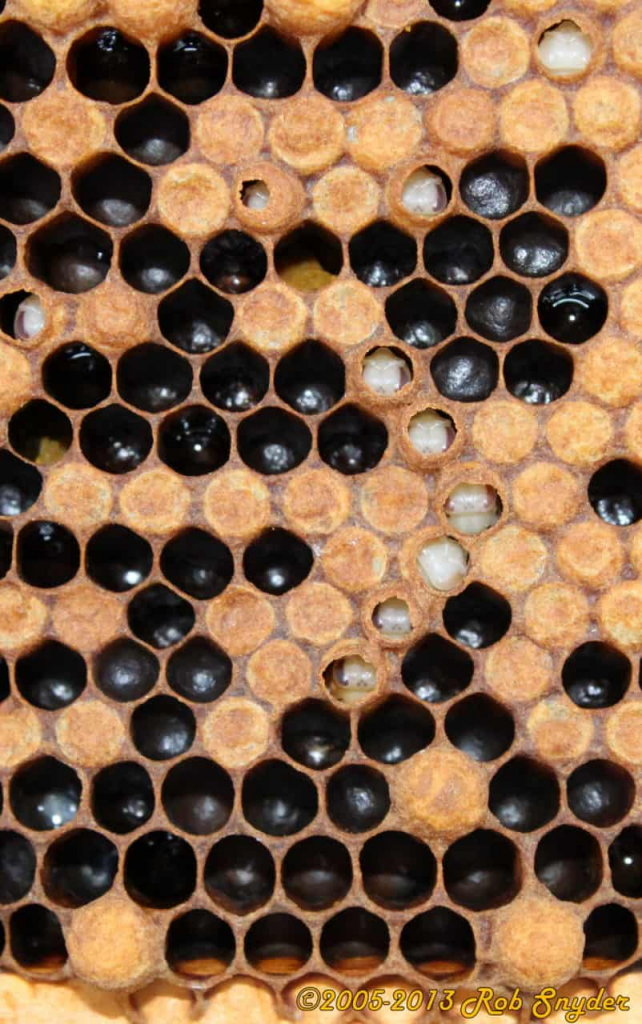
Bald brood is a relatively common issue that impacts developing honey bee pupae. Beekeepers often observe linear rows of uncapped brood cells, with exposed larvae still developing inside. But what exactly causes this phenomenon, and how can beekeepers address it?
Causes of Bald Brood
- Wax Moth Infestation: The primary culprit behind bald brood is the Greater wax moth (Galleria mellonella). Lesser wax moths (Achroia grisella) also play a role but have less impact. These moths tunnel underneath the comb, causing destruction. In response, honey bees uncap the affected cells, remove the silky tunnels, and evict the unwanted pests.
- Irregular Patterns: Sometimes, randomly scattered bald brood results from other hive issues:
- Genetic Disposition: Underperforming colonies with sub-par genetics may exhibit random uncapped cells. Requeening is an option here.
- Hive Faults: Frames positioned too closely together can lead bees to uncap cells.
- Other Pests: Varroa mites and Tropilaelaps mites may also cause uncapped developing brood.
Impact on Bees
- Minor Problem: Bald brood isn’t a major threat to honey bee colonies. However, it’s not ideal for bees to develop in exposed conditions.
- Possible Effects: While bees usually reach adulthood, they may be smaller, malformed, or have larvae feces stuck to them.
- Thriving Hives vs. Weak Hives: Strong hives handle the underlying issue better, while weak hives struggle with other diseases or threats.
Differentiating Bald Brood from Hygienic Behavior
- Bald Brood: Worker bees uncap brood cells due to wax moth larvae presence. It shows a straight-line pattern.
- Hygienic Behavior: Bees detect, uncap, and remove diseased or parasitized brood. This behavior appears random.
- Raised Sidewalls: Bald brood cells usually have raised sidewalls slightly above other sealed brood.
Remember, maintaining healthy hives and monitoring for pests are essential practices for beekeepers. 🐝
References: